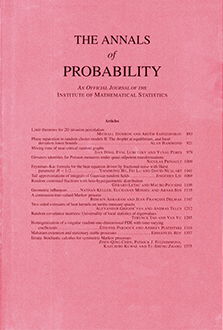Abstract
The signature of a path provides a top down description of the path in terms of its effects as a control [Differential Equations Driven by Rough Paths (2007) Springer]. The signature transforms a path into a group-like element in the tensor algebra and is an essential object in rough path theory. The expected signature of a stochastic process plays a similar role to that played by the characteristic function of a random variable. In [Chevyrev (2013)], it is proved that under certain boundedness conditions, the expected value of a random signature already determines the law of this random signature. It becomes of great interest to be able to compute examples of expected signatures and obtain the upper bounds for the decay rates of expected signatures. For instance, the computation for Brownian motion on [0,1] leads to the “cubature on Wiener space” methodology [Lyons and Victoir, Proc. R. Soc. Lond. Ser. A Math. Phys. Eng. Sci. 460 (2004) 169–198]. In this paper we fix a bounded domain Γ in a Euclidean space E and study the expected signature of a Brownian path starting at z∈Γ and stopped at the first exit time from Γ. We denote this tensor series valued function by ΦΓ(z) and focus on the case E=Rd. We show that ΦΓ(z) satisfies an elliptic PDE system and a boundary condition. The equations determining ΦΓ can be recursively solved; by an iterative application of Sobolev estimates we are able, under certain smoothness and boundedness condition of the domain Γ, to prove geometric bounds for the terms in ΦΓ(z). However, there is still a gap and we have not shown that ΦΓ(z) determines the law of the signature of this stopped Brownian motion even if Γ is a unit ball.
Citation
Terry Lyons. Hao Ni. "Expected signature of Brownian motion up to the first exit time from a bounded domain." Ann. Probab. 43 (5) 2729 - 2762, September 2015. https://doi.org/10.1214/14-AOP949
Information





